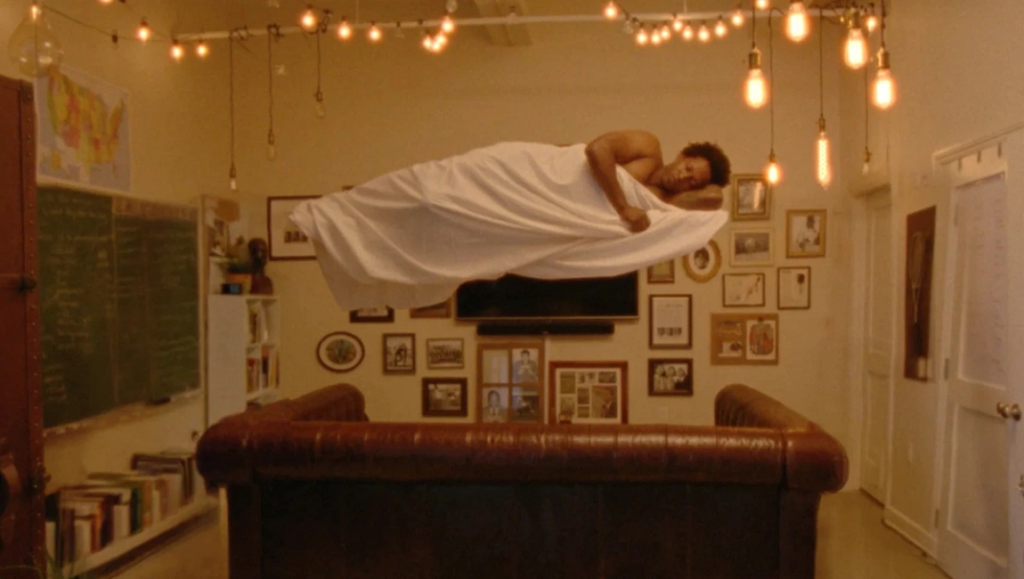Skinner Myers’ feature debut is a serpentine construct, a vision of subjectivity that embraces both virtuousness and transgression, emphatic in its depiction of self-destruction. The plot, as it were, concerns a young Black man contending with his very Blackness after he is ordered to commit fraud by a white boss. But it’s less a work to be observed linearly than it is for the progression of events that appear less chronologically oriented than smitten with signification. We open and close with a very explicit invocation of Tarkovsky. Specifically, we see our protagonist, a character whose name we never learn, floating in his sleep à la Margarita Terekhova in the auto-fiction Mirror. With such an initial positioning, we may lean into the reference, extrapolating from it a desire to see the poetic fragmentation of Tarkovsky sustained. And so, The Sleeping Negro takes on the burden of self-identification. Where Tarkovsky sought the death of the self through a dissonance with history as it unfurled, Myers finds the internalized yet socialized racialization of that self instead. This then begs the question: within a white supremacist society, what are the effects and faculties of this learned perception? Myers’ vision of this is an effacing violence, a seething hatred that cannot be expressed except in the darkest recesses of the psyche. Close to the end of the film, our protagonist straps himself up with arms, and neither he nor us, the viewers, will think about these weapons again.
Myers’ protagonist leads a volatile existence: exploited by his boss, curated by his partner, and estranged by both himself and his environs. A day in the life is but a refraction of years, a discourse of identity politics that combats the identity sanctioned by and emboldened under racist infrastructure. Myers contends with this via the breakdown of his aforementioned relationships alongside some rather obtuse kinships whose vague characters proffer both an agitating and effective distancing alongside a numbing reduction in address, each debate on display through the film often falling back onto simplistic poli-sci rendition. These dialogues find their resonance through juxtaposition with the film’s aesthetic maneuverings, where tonality and formal enunciation are slippery and often softly incoherent. It all plays out with a fumbling intentionality, where the disunity of the aesthetic whole very perfectly reflects the schism of our character and, assuming that our protagonist acts as an analogue to its performer, our director himself. Here, it seems like Myers flirts with our liberal understanding of didactics in relation with Fredric Jameson’s second definition for the term. Unfortunately, the pointedness of this deliberate provocation narrows our point of access, we’re left not with mulling over the intellectualizing, but with the need to recognize it, as the film proves too generous in opening up its abstractions for scrutiny. While excavating the pain and rage buried, and seeking to glean a portrait of anger only having begun discovering while it’s festering, there isn’t much room left to wiggle, to writhe, to consider our own severances and how close they manage to climb before our conditioning kicks in and we’re left wandering through the annals of our imagination.
Published as part of InRO Weekly — Volume 1, Issue 5.


Comments are closed.